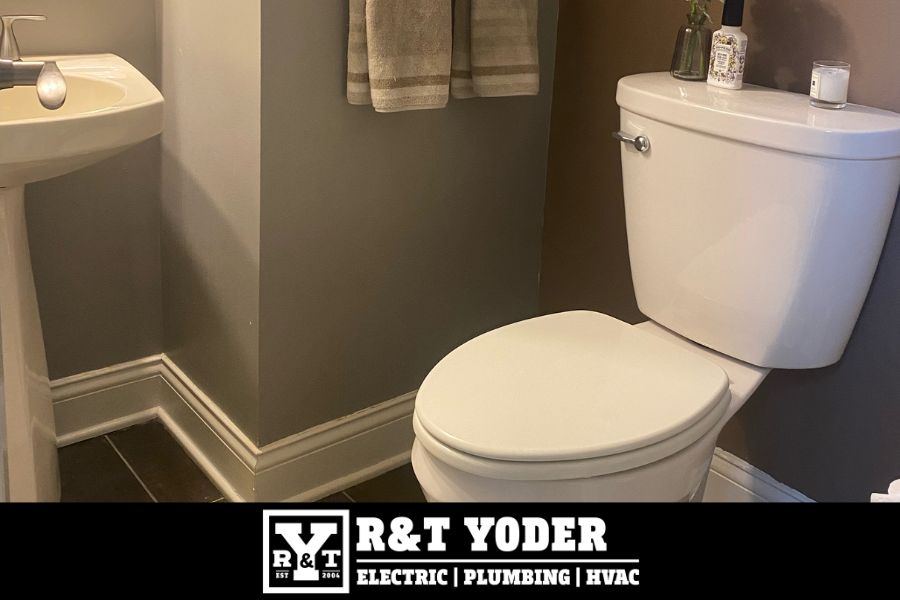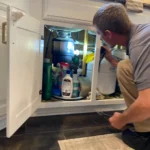Draining water from a toilet bowl might seem like an unusual task, but it’s one that many homeowners will encounter at some point. Whether you’re dealing with a stubborn clog, preparing for a repair, or simply performing a deep clean, knowing how to remove the water efficiently can save you time, effort, and potential mess. Understanding this process can also help you avoid common plumbing pitfalls and minimize the risk of water damage in your bathroom.
1. Why Would You Need to Drain a Toilet Bowl?
Draining a toilet bowl isn’t something most people do regularly, but several situations make it necessary. Here are the most common reasons you might need to remove water from the bowl
1.1 Unclogging Stubborn Blockages
Sometimes, plunging alone doesn’t solve the problem, especially if the clog is particularly stubborn or deep within the pipes. Removing the water makes it easier to use a plumbing snake or auger to clear the blockage.
1.2 Performing Toilet Repairs
Certain repairs, such as replacing the wax ring, fixing a faulty flange, or adjusting the fill valve, require an empty toilet bowl. Draining the water first ensures you can work without creating a mess.
1.3 Deep Cleaning
Over time, mineral deposits, rust stains, and bacteria can build up in the toilet bowl. Draining the water allows you to scrub the bowl more effectively, reaching areas that are typically submerged.
1.4 Preventing Overflows
If the toilet is on the verge of overflowing due to a blockage, draining the water can help prevent an unsanitary mess.
1.5 Moving or Replacing the Toilet
If you need to uninstall or replace your toilet, draining the bowl and tank prevents spills and makes the process easier to manage.
2. Tools and Materials You’ll Need
Before you start draining the toilet bowl, gather the necessary tools and materials. Having everything on hand will make the process more efficient and less stressful. Here’s what you’ll need
- Rubber Gloves: Protect your hands from germs and bacteria.
- Plunger: Helps push water down the drain and clear minor blockages.
- Small Container or Cup: For scooping out the remaining water.
- Sponge or Towels: To soak up residual water in the bowl.
- Bucket: To hold the water you remove from the bowl.
- Old Towels or Rags: To protect the floor from spills and splashes.
- Wet/Dry Vacuum (Optional): Speeds up the process and minimizes mess.
3. Step-by-Step Guide to Draining Water from a Toilet Bowl
Follow these steps carefully to drain your toilet bowl efficiently and without unnecessary mess
Step 1: Shut Off the Water Supply
- Locate the Valve: Find the water supply valve behind the toilet, typically near the base of the tank.
- Turn Off the Water: Turn the valve clockwise until it stops. This will prevent more water from entering the tank and bowl.
Step 2: Flush the Toilet
- Flush Once: Press the flush handle to empty as much water as possible from the tank and bowl.
- Check the Water Level: After flushing, the bowl should be partially empty. Since the water supply is off, the tank will not refill.
Step 3: Use a Plunger to Push Out More Water
- Create a Seal: Place the plunger firmly over the drain hole in the bowl.
- Plunge Vigorously: Push down and pull up several times to force more water down the drain.
- Check Progress: Remove the plunger and see if the water level has decreased. Repeat if necessary.
Step 4: Scoop Out Remaining Water
- Use a Cup or Container: With your gloves on, use a small cup to scoop out the remaining water from the bowl.
- Empty into a Bucket: Pour the water into a bucket to avoid spills. Work slowly to minimize splashing.
Step 5: Soak Up Residual Water
- Use a Sponge or Towels: Once most of the water is removed, use a sponge or old towels to soak up the remaining water in the bowl.
- Wring Out Excess: Wring out the sponge or towels into the bucket until the bowl is completely dry.
Step 6: Clean the Area
- Wipe Down the Bowl: Use disinfectant wipes or a cleaning solution to sanitize the bowl and surrounding area.
- Dry the Floor: If any water splashed onto the floor, dry it thoroughly to prevent slipping or water damage.
4. Alternative Methods for Draining a Toilet Bowl
4.1 Using a Wet/Dry Vacuum
If you have a wet/dry shop vacuum, this can be the fastest and cleanest way to drain the bowl
- Set the Vacuum to Wet Mode: Ensure it’s configured to handle liquids.
- Insert the Hose: Place the vacuum hose into the toilet bowl.
- Suck Out the Water: Turn on the vacuum and remove the water until the bowl is empty.
4.2 Using a Siphon
If a plunger or vacuum isn’t available, a siphon can also work
- Fill a Hose with Water: Insert one end into the toilet bowl and the other into a bucket placed lower than the toilet.
- Start the Flow: Allow gravity to pull the water through the hose into the bucket.
5. Tips for Draining a Toilet Bowl Safely
- Wear Protective Gear: Always wear gloves to protect yourself from bacteria and contaminants.
- Protect the Floor: Place towels or rags around the base of the toilet to catch any accidental spills.
- Work Slowly: Rushing can lead to splashes or spills, so take your time to minimize mess.
- Use Gentle Force: When plunging, avoid using excessive force to prevent damaging the toilet’s porcelain.
- Disinfect Thoroughly: After completing the task, clean the bowl, tools, and surrounding area with a disinfectant to ensure hygiene.
6. Refilling the Toilet Bowl
Once your repairs, cleaning, or maintenance tasks are complete, refilling the toilet bowl is straightforward
- Turn On the Water Supply: Turn the water supply valve counterclockwise to restore water flow.
- Flush the Toilet: Flush to allow the tank and bowl to refill completely.
- Check for Leaks: Inspect the base and connections to ensure there are no leaks.
- Test Functionality: Flush a few more times to ensure everything is working properly.
7. When to Call a Professional Plumber
While draining a toilet bowl is usually a simple task, there are situations where professional help is necessary
- Persistent Clogs: If repeated attempts to clear a clog fail, a plumber can diagnose and resolve deeper issues.
- Leaks or Cracks: Water leaking from the base or cracks in the toilet require professional repair or replacement.
- Sewer Backups: If you notice foul odors, slow drains, or water backing up into other fixtures, it may indicate a serious sewer line problem.
- Complex Repairs: Replacing a flange, wax ring, or dealing with extensive plumbing issues is best left to a professional.
8. Preventative Maintenance Tips
Preventing toilet issues before they arise can save you from the hassle of draining the bowl in the first place. Here are some effective maintenance tips
- Flush Only Toilet Paper: Avoid flushing wipes, paper towels, sanitary products, or other non-flushable items.
- Regular Cleaning: Clean the bowl weekly to prevent mineral buildup and stains.
- Check for Leaks: Inspect the base and tank for any signs of leaks regularly.
- Use a Drain Guard: Install a drain guard to catch debris and prevent clogs.
- Avoid Harsh Chemicals: Use natural cleaners like baking soda and vinegar instead of chemical drain cleaners that can damage pipes.
Draining water from a toilet bowl is a valuable skill that can make handling clogs, repairs, and deep cleaning tasks easier and more efficient. By following this step-by-step guide and using the right tools, you can complete the process with minimal mess and frustration. Remember to stay safe, work carefully, and know when it’s time to call in a professional plumber for more serious issues. With proper maintenance, you can keep your toilet in excellent working condition and avoid unexpected problems.











